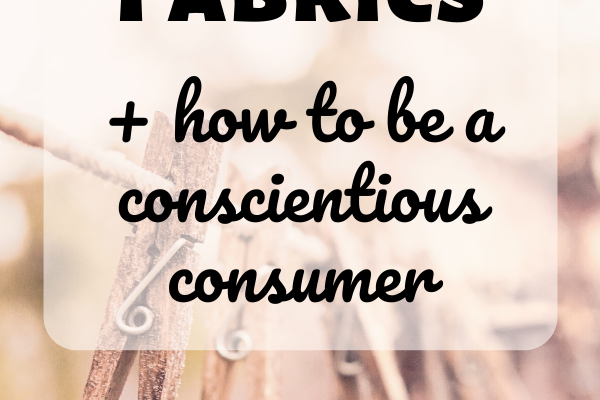It’s spring! It’s spring! It’s finally spring! Hooray!
I’m so excited for a new batch of yard projects this year. Last year, we moved to a new home and yard projects included the necessary fence for our dogs and a patio — big projects to help our yard fit our family.
This year we get to focus on gardening and landscaping. Things that will make our yard our home and help us live more sustainably.
One of the things that we put in at our former home that we loved (so much!) was a rain garden.
Rain gardens are a beautiful way to help keep your basement from flooding, they help clean the water, and they help promote sound ecology in your community.
This post contains affiliate links.
What is a rain garden?
A rain garden is a recessed space in your yard to which water is directed from a drain pipe. While water from gutters would normally run into the yard and then to the street, with a rain garden, this water comes out the spout, goes into a drain in the ground which is connected to a pipe leading to the rain garden.
Rain gardens are typically filled with a variety of native plants.
How is this good for the environment?
Groundwater
During a rainstorm, water goes from your downspout, through your yard, and into the storm sewer, which then drains back into the waterways. This water can pick up litter, fertilizers, road salts, etc. polluting your local bodies of water and make your lakes green and unswimmable. By redirecting this water to a rain garden, rather than entering the storm sewer, the water is filtered through the plants and soils and a larger percentage enters the water table.
Plants
In recent years there has been a movement to save the bees and butterflies. Intensive agricultural practices, pesticides, urban sprawl, and traditional yard “maintenance” have reduced the available habitat and declined populations of these beautiful and important species.
The plants cultivated in a rain garden are largely native perennial and biennial species that encourage pollinator populations, providing plenty of food and habitat.
What kind of plants do you plant in rain gardens?
Check with your local agricultural extension or garden store for ideas as to what will work best in your area, but here are some plants that will generally succeed in a rain garden.
Milkweeds
Milkweeds are known for their ability to attract butterflies. There are a variety of species in various heights and colors.
Coneflowers/Daisies
Purple coneflowers, Black-eyed Susans, and daisies can add a happy pop to your rain garden!
Herbs
Members of the mint family, chamomile, echinacea, and dill can all be great edible additions to a rain garden. We’ve also had much success with anise, which makes an awesome tea!
Worts
Figwort, Motherwort, St. John’s wort…. There are a variety of colors and styles for all tastes.
Asters and Lobelias
Another couple of fresh, friendly flowers for our flying friends!
How do I build a rain garden?
First of all, be sure to pick a location for your garden that’s at least 10 feet from your home. In the event of heavy rains, the garden will fill and possibly overflow, so best to keep it a safe distance from your house and foundation.
Secondly, examine your soil. A rain needs to drain, so be sure your space isn’t clay. If you have any questions about the soil or project’s viability, check with your local agricultural extension to learn more.
Dig
You’ll have to do quite a bit of digging for a rain garden.
To have a proper rain garden, you’ll need to create a passageway from your downspout to the garden. To do this, you’ll need to dig a trench from your downspout to the rain garden, being mindful that it continually slopes downward, even if only slightly. A long level will work just fine.
In your trench, you’ll install a catch basin and drain pipe to carry the water to the rain garden. Depending on how much pipe you need to reach your rain garden, this is a pretty small investment and could save you thousands if you risk flooding in your home during heavy rains.
Of course, you’ll also need to dig the rain garden itself. How deep your rain garden goes is a combination of two factors — aesthetics and slope.
A rain garden really it only needs to be deep enough to ensure that the piping continually slopes and drains into the garden, but it’s recommended that they’re 1’-2’ deep and in a location where water is naturally draining. Make it any shape or size you like!
| |
|---|---|
| |
Plant
Shopping for native plants is so fun! But if they’re something you’re not familiar with, it can also make designing a little overwhelming. There are so many heights, colors, leaf shapes, and pollinators to attract when considering which plants to choose. Be mindful to choose plants that do well in moist soils — as rain gardens are meant to be a soggy place! The only other guidance I can really offer is to mind your sun levels and plant height, putting tall plants at the deepest parts of your garden. You may also want to buy a variety with varying flowering timeframes to keep the space visually appealing all spring, summer, and fall.
A Budget-Friendly Project
If you don’t want to spend much on flowers, no worries! A few plants will do. Perennials can take a few years to mature and, what may start as a small bit of greenery can consume much of your garden’s real estate a few years down the line. Not to mention the overwhelming number of plants you may have when they reseed themselves.
We had one anise plant in our first rain garden; by year three we had eight, so we transplanted a few. The following year, we had hundreds and a buzzing hub under our pines.
Final Step: Enjoy
It’s lots of fun to watch a rain garden grow and to become familiar with the critters that visit it. (And don’t be surprised if you see a frog or two!) You can always rehome plants later if you have more than you need. And what better way to encourage others to help Mother Nature than to provide them with some starters?!
What summer landscaping projects do you have up your sleeve this year? I’d love to hear about them in the comments below!
— Melissa, Funky Crunchy Mama
| |
|---|---|
| |
Edited January 6, 2022












I would love to do something like this in my backyard. I need to do something in improve drainage. It always holds so much water and my dog is a mess if she goes back there. Its seems like a waste of space at the moment.
I know all about messy dogs! 🙂 Rain gardens are a great way to redirect water. If you decide to move ahead, I’d love to see the results!
We put in a rain garden 4 years ago right underneath a huge black walnut tree. Contrary to what I had been lead to believe, many native plant varieties flourish here. It took a bit of research to see what plants are juglone tolerant but we found so many options.
I find great deals on plants at local nurseries at the end of the season and have gotten a lot of plants for free by asking on local FB pages. When I split my plants I offer to trade and give away on the same Facebook pages as well (or put at the end of my driveway with a free sign).
Last year we found monarch butterfly caterpillars and brought them in to “raise”. It was amazing and wonderful to release them back to where we had found them once they had grown. I can’t wait to see what my garden’s grow in to this spring!
That’s awesome, Stacy! What a fun way to enjoy your garden. 🌱
And yes, spread the word about natives under trees! It blew my mind when our anise went crazy under pine trees…. PINE TREES! I didn’t think anything, but hosta we’re supposed to grow under them.